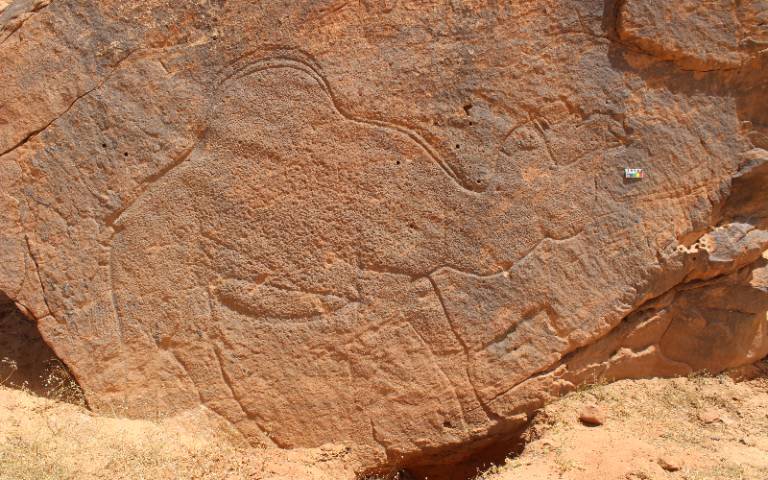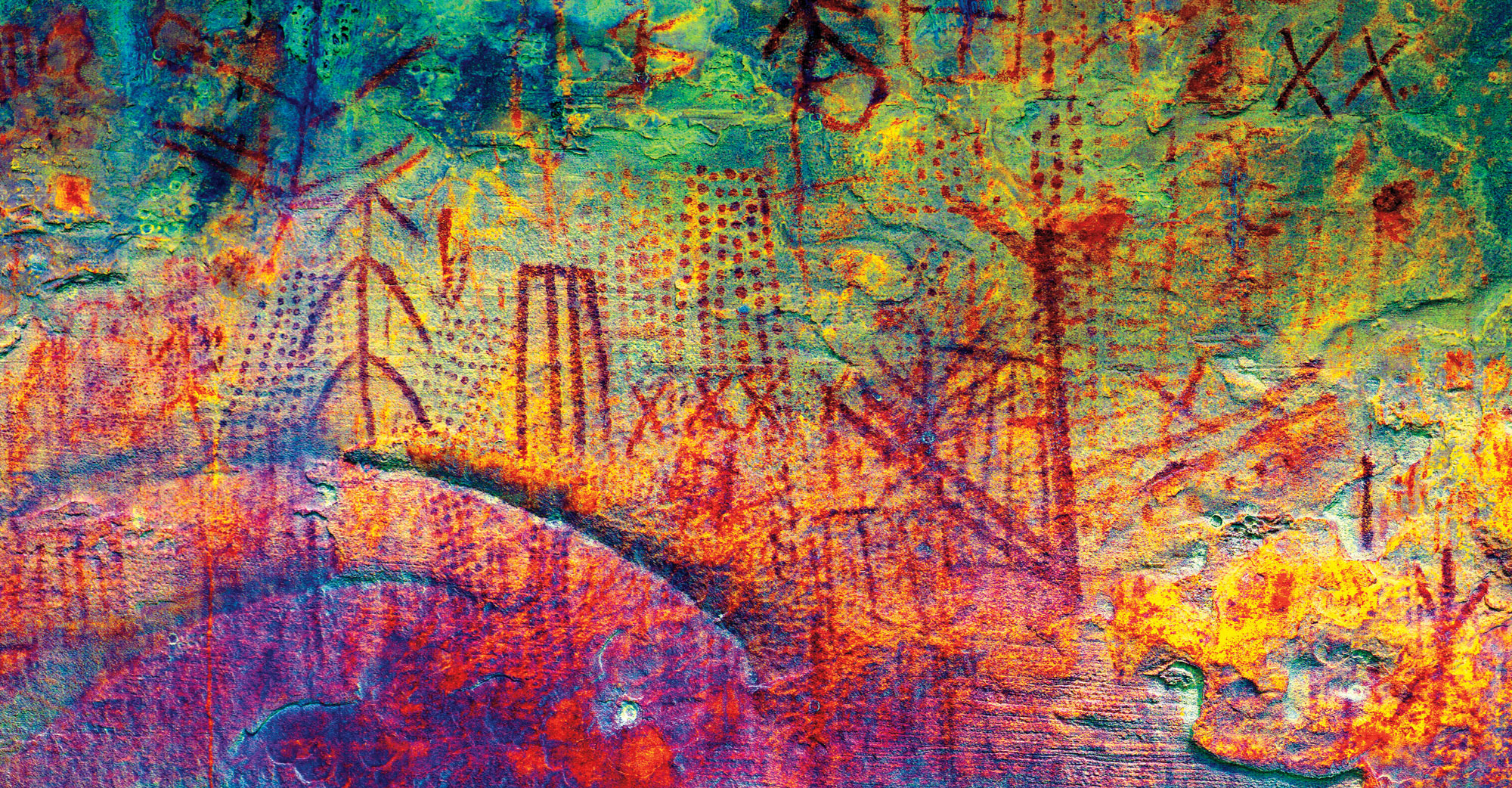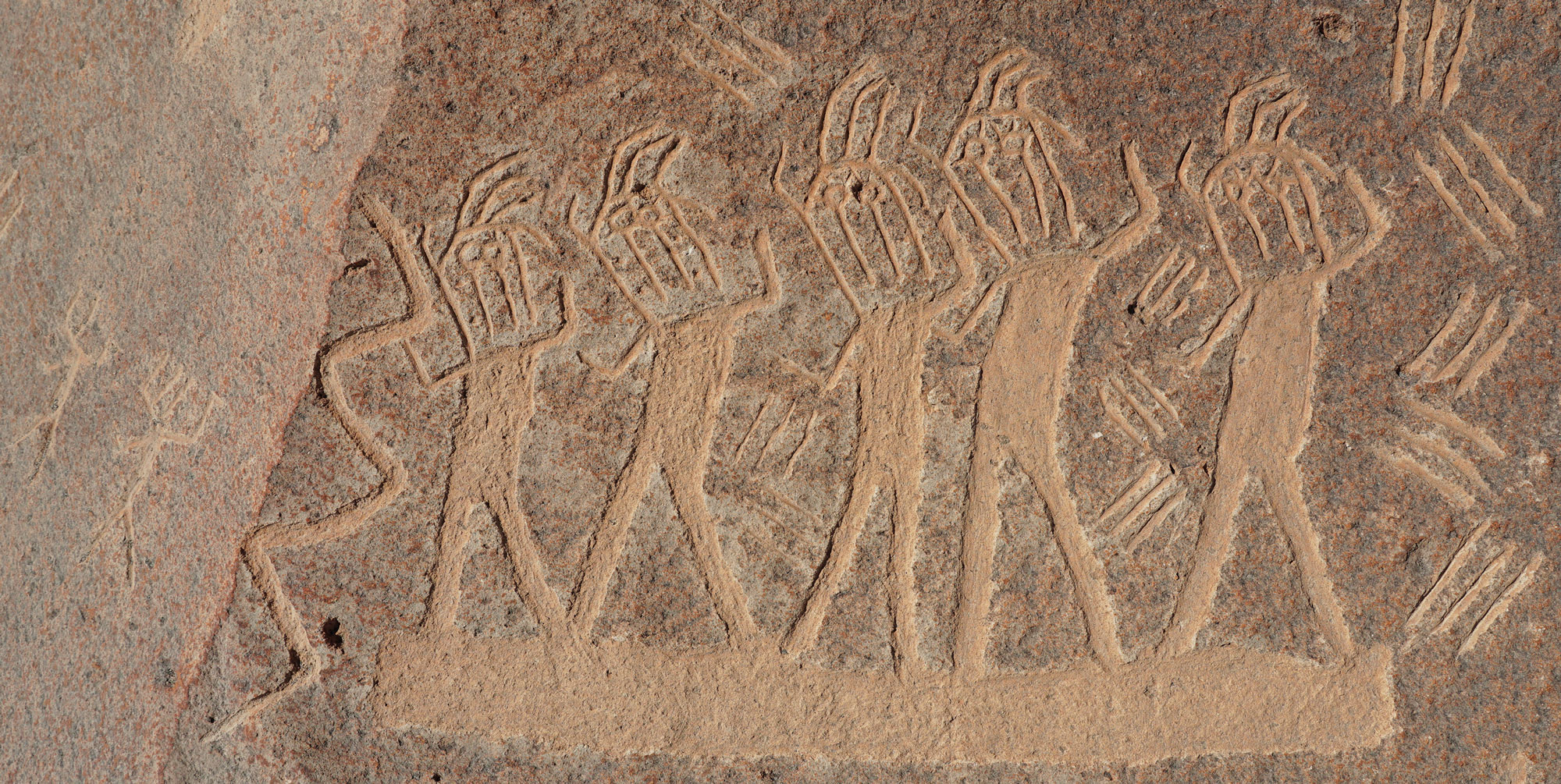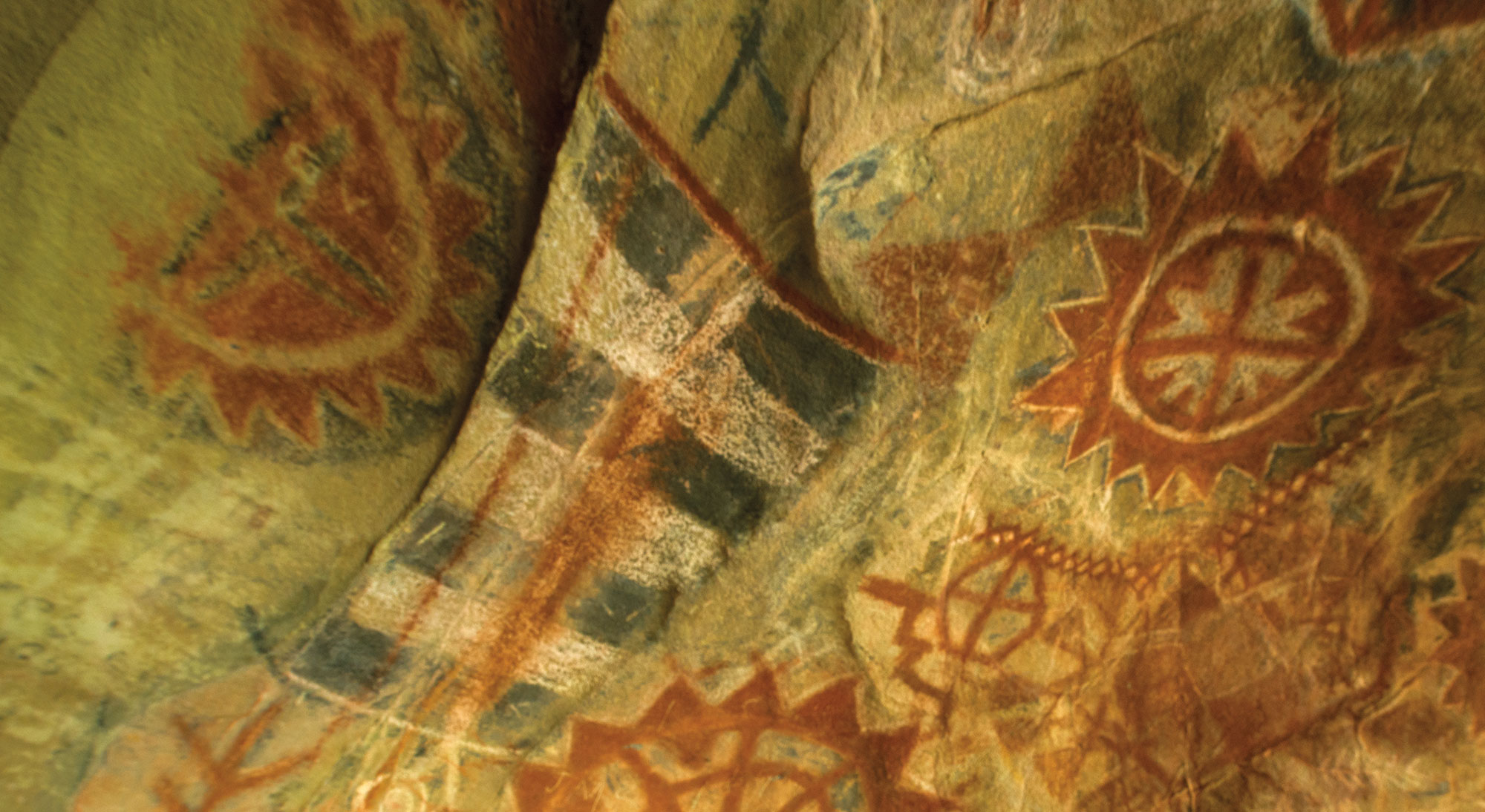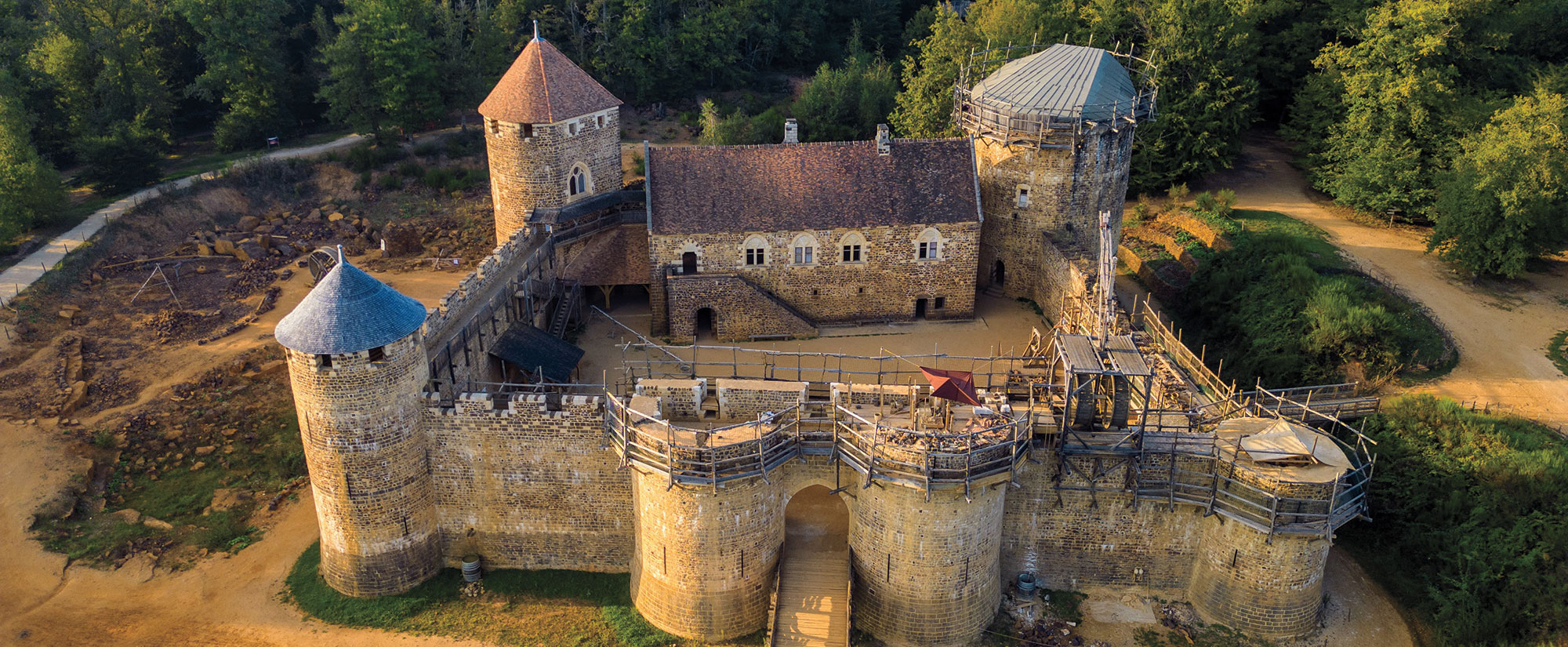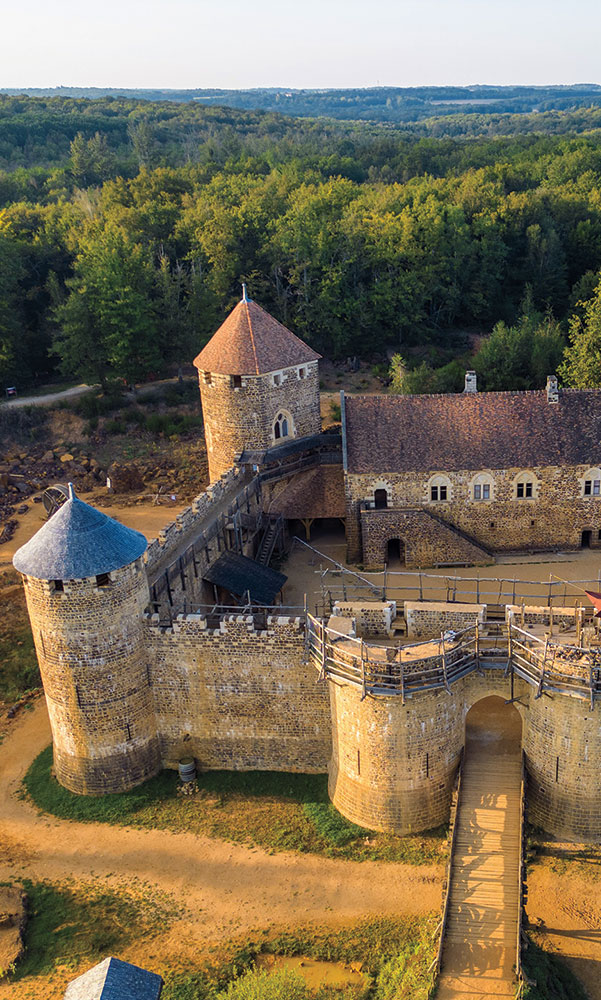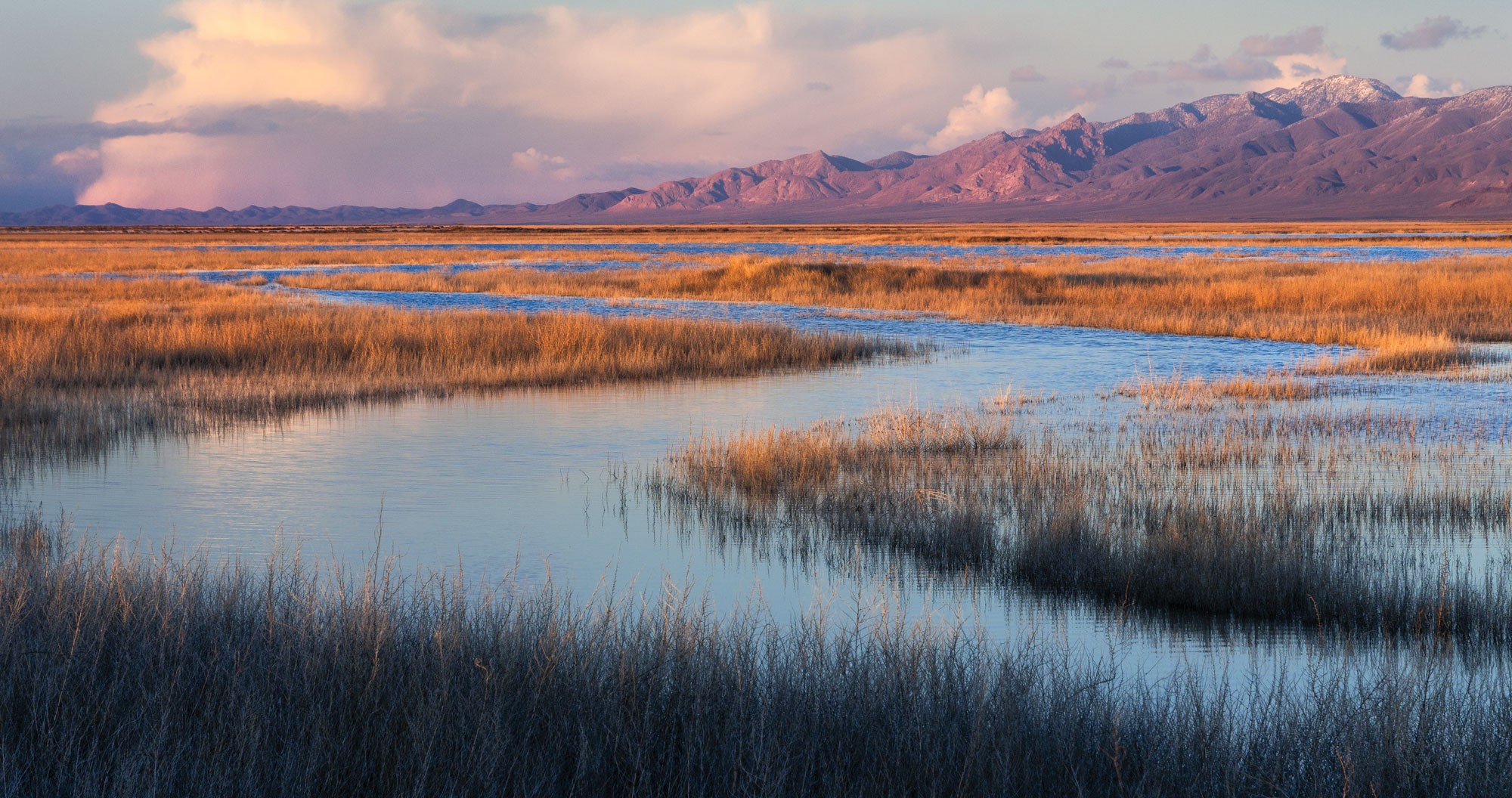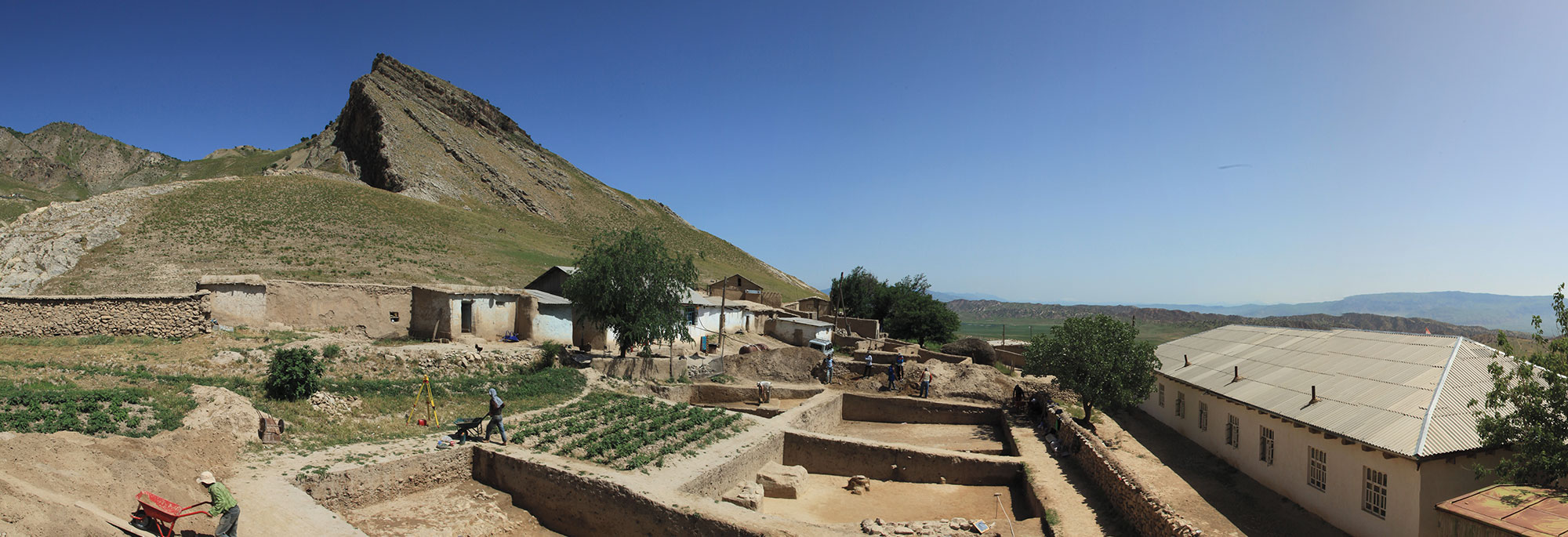NEFUD DESERT, SAUDI ARABIA—Researchers were recently surprised when they encountered more than 60 ancient rock art panels lining the mountainous terrain of the Nefud Desert in northern Saudi Arabia, Reuters reports. Overall, the team recorded more than 130 life-size images of camels, gazelles, ibexes, wild donkeys, and aurochs that had been carved into the sandstone cliffs around 12,000 years ago. This indicates that the climate there was at least partly habitable at that time and that groups of hunter-gatherers were passing through the region 2,000 years earlier than previously believed. Experts posit that the ancient communities likely survived the inhospitable desert conditions by moving between seasonal lakes. The team also believes the monumental rock engravings perhaps marked the paths and locations of essential water sources within the landscape. This theory is supported by the prevalence of images of male camels, which were often associated with the rainy season. While most of the images were close to ground level, one scene featuring 19 camels and three donkeys was carved in a spot 128 feet up and only accessible via a narrow ledge. “Standing on this ledge, the engravers would also not have been able to see the whole image they were creating,” said archaeologist and rock art researcher Maria Guagnin. “But they had the skill to still produce a naturalistic representation.” Read the original scholarly article about this research in Nature Communications. For more, go to "Oldest Animal Art," one of ARCHAEOLOGY's Top 10 Discoveries of 2021.
